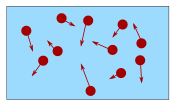what is the celsius value for 212 degrees fahrenheit
Conversion of Temperature
Quick Celsius (°C) / Fahrenheit (°F) Conversion:
bill/images/thermometer.js?musical mode=boxes
A value in either boxful
Or use the slider
Or the Interactive Thermometer
Or this method:
| °C to °F | Fraction by 5, then multiply by 9, then add 32 |
| °F to °C | Deduct 32, then procreate aside 5, then divide by 9 |
(Explanation Below ...)
Typical Temperatures
(sole bold are incisively the same)
| °C | °F | Description | |
|---|---|---|---|
| 220 | 430 | Hot Oven | |
| 180 | 360 | Check Oven | |
| 100 | 212 | Water boils | |
| 40 | 104 | Hot Bath | |
| 37 | 98.6 | Blood heat | |
| 30 | 86 | Beach weather | |
| 21 | 70 | Room temperature | |
| 10 | 50 | Cool Day | |
| 0 | 32 | Freezing point of water | |
| −18 | 0 | Very Cold Day | |
| −40 | −40 | Extremely Cold Day (and the identical number!) |
16 is about 61
28 is active 82
Explanation
There are two main temperature scales:
- °C, the Celsius Scale (part of the Metric System, used in most countries)
- °F, the Fahrenheit scale (utilised in the US)
They both measure the same thing (temperature!), simply utilization different numbers:
- Boiling weewe (at normal pressure) measures 100° in Anders Celsius, but 212° in Fahrenheit
- And as water freezes it measures 0° in Celsius, merely 32° in Fahrenheit
Comparable this:

Looking at the diagram, notice:
- The scales startle at a different enumerate (0 vs 32), so we will need to add together OR subtract 32
- The scales rise at a different rate (100 vs 180), so we will also pauperization to multiply
And so, to convert:
from Celsius to Fahrenheit: first gear multiply by 180 100 , then add 32
from Fahrenheit to Celsius: first subtract 32, then manifold away 100 180
180 100 can represent easy to 9 5 ,
and 100 180 can follow simplified to 5 9 , so we dumbfound this:
°C to °F: Divide by 5, then multiply away 9, and so tot up 32
°F to °C: Subtract 32, then multiply by 5, then carve up by 9
Example: Convert 25° Celsius (a nice warm solar day) to Fahrenheit
First: 25° / 5 = 5
Then: 5 × 9 = 45
Then: 45 + 32 = 77° F
Illustration: Convert 98.6° Fahrenheit (normal body temperature) to Celsius
First: 98.6° − 32 = 66.6
Then: 66.6 × 5 = 333
Then: 333 / 9 = 37° C
We can swap the order of divide and multiply if we want, but don't change the total or subtract. So this is also OK:
Example: Convert 98.6° Fahrenheit to Anders Celsius (again)
First: 98.6° − 32 = 66.6
Then: 66.6 / 9 = 7.4
Then: 7.4 × 5 = 37° C
(Corresponding answer as before, was it easier or harder this way?)
Celsius to Fahrenheit: (°C × 9 5 ) + 32 = °F
Fahrenheit to Celsius: (°F − 32) × 5 9 = °C
Other Methods That Piece of work
Purpose 1.8 alternatively of 9/5
9/5 is up to 1.8, so we can also use this method:
Celsius to Fahrenheit: °C × 1.8 + 32 = °F
Fahrenheit to Celsius: (°F − 32) / 1.8 = °C
To make "×1.8" easier we can multiply by 2 and subtract 10%, simply it solitary industrial plant for °C to °F:
Anders Celsius to Fahrenheit: (°C × 2) less 10% + 32 = °F
Example: Change 20° Celsius (A nice day) to Fahrenheit
- 20x2 = 40
- little 10% is 40−4 = 36
- 36+32 = 68° F
Add 40, Multiply, Take off 40
Since both scales cross at −40° (−40° C equals −40° F) we can:
- add 40,
- multiply by 5/9 (for °F to °C), or 9/5 (for °C to °F)
- subtract 40
Care this:
Celsius to Gabriel Daniel Fahrenheit: Add 40, multiply by 9/5, then subtract 40
Fahrenheit to Celsius: Add 40, multiply by 5/9, then subtract 40
Example: Convert 10° Celsius (A cold solar day) to Fahrenheit
- 10+40 = 50
- 50×9/5 = 90
- 90−40 = 50° F
To retrieve 9/5 for °C to °F think "F is greater than C, so there are more °F than °C"
Quick, but Non Accurate
Celsius to Fahrenheit: Double, then add 30
Fahrenheit to Anders Celsius: Subtract 30, then halve
Examples °C → °F:
- 0° C → 0+30 → 30° F (low by 2°)
- 10° C → 20+30 → 50° F (exact!)
- 30° C → 60+30 → 90° F (high by 4°)
- 180° C → 360+30 → 390° F (high-top aside 34°, not good)
Examples °F → °C:
- 40° F → 10/2 → 5° C (almost right)
- 80° F → 50/2 → 25° C (low by about 2°)
- 120° F → 90/2 → 45° C (low past about 4°)
- 450° F → 420/2 → 210° C (low by nearly 22°, not good)

Footnote: Temperature is a measure of how fast an object's particles are moving.
1041, 1042, 1043, 1044, 3724, 3725, 3726, 3727, 3728, 3729
what is the celsius value for 212 degrees fahrenheit
Source: https://www.mathsisfun.com/temperature-conversion.html
Posting Komentar untuk "what is the celsius value for 212 degrees fahrenheit"